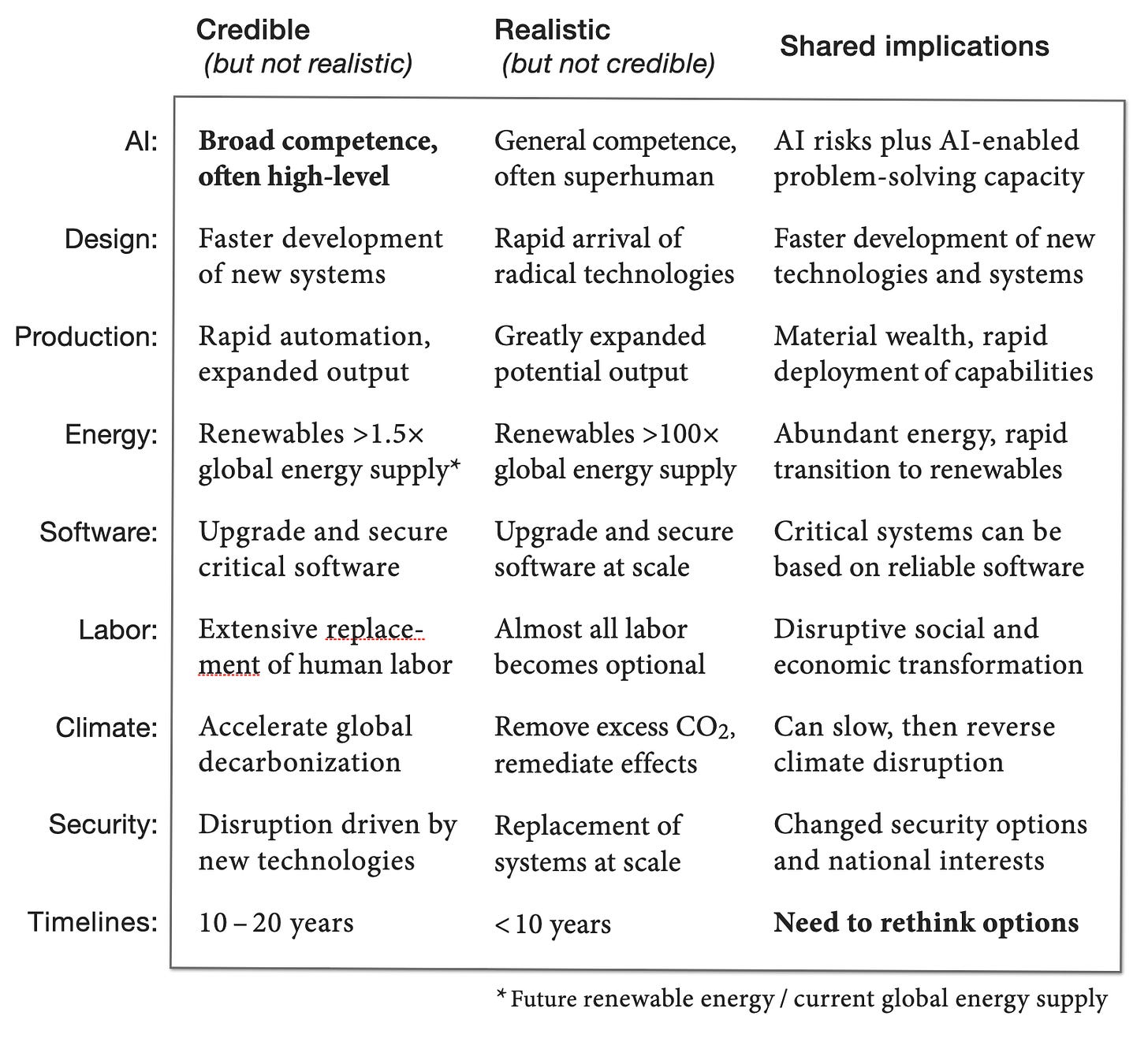Toward Credible Realism
How can we prepare for realistic, radically-disruptive developments, yet focus on credible prospects? Fortunately, credible AI-driven prospects can align with realistic challenges and opportunities.
Realistic — hence radical — technological prospects surpass the bounds of current credibility, yet AI developments have opened the Overton window to credible prospects that motivate realistic concerns. This partial alignment of credibility with realism can lend credibility to realistic options without first changing opinions about fundamental technological prospects.
The concept of “credible realism” suggests an approach to analysis and communication that can shift the Overton window for policy debates, and perhaps make historic blunders less likely.
Where credibility aligns with radical realities
Realistic AI prospects (in my opinion) include general, superhuman-level capabilities within 10 years, yet credible AI prospects already include human-level AI capabilities in wide-ranging applications within 20 years. These scenarios differ, yet both lead to deep disruption of labor markets and a historic expansion of productive capacity.
Realistic technological prospects (in my opinion) include radically transformative atomically precise mass fabrication, yet credible AI-enabled prospects already include a range of disruptive technologies developed and deployed with unprecedented speed. These scenarios differ, yet both suggest that (for example) military planners should reevaluate strategic prospects and explore new options.
And so on:
All of these areas share a theme: AI-enabled expansion of general implementation capacity, a greater ability to design, develop, deploy, apply, and adapt complex sociotechnical systems at scale. In both credible and realistic scenarios, expanded implementation capacity has broadly similar implications for production, software, energy, labor demand, climate, and so on. Effects differ more in magnitude than in direction.
Stretching the Overton window
Analysis that stretches the Overton window in appropriate directions can better align perceived options with reality. For example, showing how credible advances in AI, robotics, and design capabilities could combine to greatly expand productive capacity — deliberately focusing on high-end possibilities — will foster expectations that reduce future surprises and regrets.
Note that credibility need not mean confidence: To do their jobs well, analysts and advisors must consider even unlikely contingencies, provided that they’re credible. And this is a matter not only of evidence and reason, but of social process. Credibility and contingency planning can provide cover for secret realists as they work to shift understanding of what the future can be.





